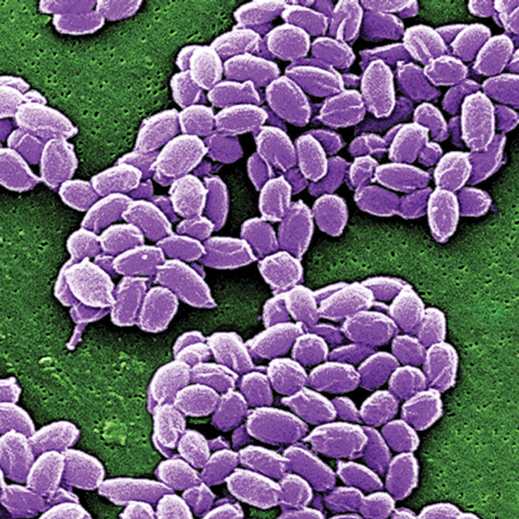Anthrax Makeover
Bacillus anthracis bacteria have exceptionally efficient machinery for injecting toxic proteins into cells, leading to the potentially deadly infection known as anthrax. A team of MIT researchers has now hijacked that delivery system for a different purpose: administering cancer drugs.

“Anthrax toxin is a professional at delivering large enzymes into cells,” says Bradley Pentelute, an assistant professor of chemistry. “We wondered if we could render anthrax toxin nontoxic and use it as a platform to deliver antibody drugs into cells.”
In a recent paper, Pentelute and colleagues showed that they could use a disarmed version of the anthrax toxin to deliver two proteins known as antibody mimics, which can kill cancer cells by disrupting specific proteins inside the cells.
Antibodies—natural proteins the body produces to bind to foreign invaders—are a rapidly growing area of pharmaceutical development. Inspired by natural protein interactions, scientists have designed new antibodies that can disrupt proteins such as the HER2 receptor, found on the surfaces of some cancer cells. The resulting drug, Herceptin, has successfully been used to treat breast tumors that produce more than the usual amount of HER2 receptor.
Several antibody drugs have been developed to target other receptors found on cancer-cell surfaces. However, the potential usefulness of this approach has been limited by the difficulty of getting proteins inside cells. This means that many potential targets have been “undruggable,” Pentelute says.
For inspiration to solve this problem, Pentelute and his colleagues turned to nature. The anthrax toxin has three major components. One is a protein called protective antigen (PA), which binds to receptors called TEM8 and CMG2 that are found on most mammalian cells. Once PA attaches to the cell, it forms a docking site for two anthrax proteins called lethal factor (LF) and edema factor (EF). These proteins are pumped into the cell through a narrow pore and disrupt cellular processes, often resulting in the cell’s death.
However, this system can be made harmless by removing the toxic sections of the LF and EF proteins, leaving behind the sections that allow the proteins to penetrate cells. The MIT team removed the toxic sections and replaced them with the antibody mimics, allowing these cargo proteins to catch a ride into cells through the PA channel.
After successfully interfering with several cancer proteins in tumor cells grown in the lab, the team is now testing this approach to treat tumors in mice.
Keep Reading
Most Popular
Large language models can do jaw-dropping things. But nobody knows exactly why.
And that's a problem. Figuring it out is one of the biggest scientific puzzles of our time and a crucial step towards controlling more powerful future models.
How scientists traced a mysterious covid case back to six toilets
When wastewater surveillance turns into a hunt for a single infected individual, the ethics get tricky.
The problem with plug-in hybrids? Their drivers.
Plug-in hybrids are often sold as a transition to EVs, but new data from Europe shows we’re still underestimating the emissions they produce.
Google DeepMind’s new generative model makes Super Mario–like games from scratch
Genie learns how to control games by watching hours and hours of video. It could help train next-gen robots too.
Stay connected
Get the latest updates from
MIT Technology Review
Discover special offers, top stories, upcoming events, and more.